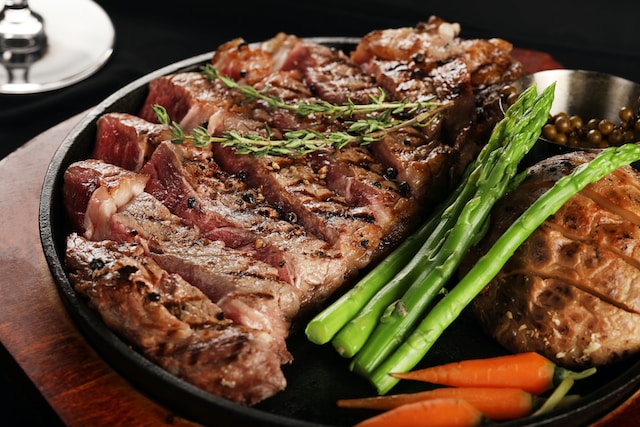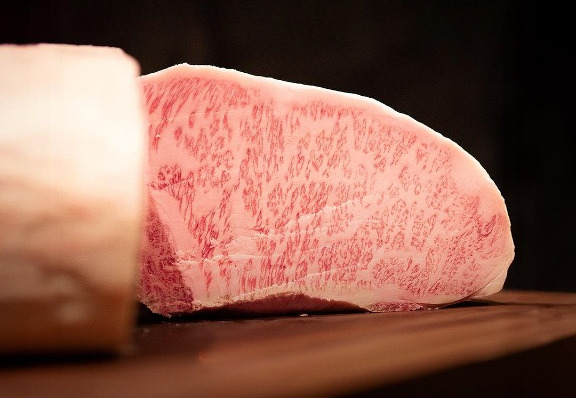How to Grill the Perfect Filet Mignon: Tips and Techniques for Juicy and Flavorful Steaks
 by
Leo Bisma
by
Leo Bisma  April 14, 2023
April 14, 2023
There's nothing quite like a perfectly grilled filet mignon - tender, juicy, and bursting with flavor. However, grilling the perfect filet mignon can be a challenge, even for experienced grill masters. In this article, we'll explore some tips and techniques for grilling the perfect filet mignon, so that you can enjoy this mouthwatering steak right in the comfort of your own home. By following the tips and techniques in this article, you can elevate your grilling game and enjoy a restaurant-quality steak right at home.

What is Filet Mignon?
Definition and Characteristics of Filet Mignon
Filet mignon is a highly sought-after cut of beef that is known for its tenderness and delicate flavor. This cut comes from the tenderloin of the cow, which is a long, slender muscle that runs along the spine. Because it is not a weight-bearing muscle, the meat is extremely tender, with a fine-grained texture and minimal fat marbling.
History and Origin of Filet Mignon
The exact origins of filet mignon are unclear, but it is believed to have been a French creation dating back to the 19th century. The term "filet mignon" is French for "cute fillet", which refers to the small size and delicate flavor of this cut. Today, filet mignon is a popular choice among steak lovers around the world and is considered a staple of upscale dining.
Why Filet Mignon is a Favorite Cut Among Steak Lovers
Filet mignon is a favorite cut among steak lovers for a number of reasons. First and foremost, it is incredibly tender, which makes for a melt-in-your-mouth eating experience. Additionally, it has a delicate flavor that pairs well with a wide variety of seasonings and sauces, making it a versatile choice for chefs and home cooks alike. Finally, filet mignon is a luxurious cut of meat that is often associated with special occasions and fine dining, making it a coveted choice for many meat lovers.
Why is Filet Mignon More Expensive?
The Cost of Raising and Preparing Filet Mignon
One of the main reasons why filet mignon is more expensive than other cuts of beef is the cost of raising and preparing the animal. Because the tenderloin muscle is not a weight-bearing muscle, it is smaller in size and requires a longer time to reach maturity.
This means that the animal needs to be fed and cared for over a longer period of time, which increases the cost of production.
Additionally, preparing filet mignon requires a great deal of skill and expertise. The meat is carefully trimmed and portioned to ensure that each cut is of the highest quality, which requires additional labor and time.
Rarity and Availability of Filet Mignon
Another reason why filet mignon is more expensive than other cuts of beef is its rarity and availability. Because it comes from a small muscle group on the cow, there is a limited supply of filet mignon available.
This means that it can be more difficult to source, which can drive up the price.
The Demand for Filet Mignon
Finally, the demand for filet mignon is another factor that contributes to its high price point. Filet mignon is a favorite cut among steak lovers around the world and is often associated with fine dining and special occasions.
This high demand can create a competitive market, driving up the price of this luxurious cut of beef.
Tips and Techniques for Grilling the Perfect Filet Mignon
Choosing the Right Cut of Meat
Choosing the right cut of filet mignon is key to achieving a perfectly grilled steak. Look for cuts that are at least 1 ½ inches thick, as thinner cuts can easily overcook and dry out on the grill. Additionally, choose filet mignon that is well marbled with fat, as this will help to keep the meat moist and flavorful during grilling.
Preparing the Steak Before Grilling
Before grilling your filet mignon, it's important to let it come to room temperature. This will help ensure even cooking and a tender, juicy steak. You can also season your steak with salt and pepper or your favorite dry rub before grilling, which will help to enhance the natural flavors of the meat.
Tips for Grilling Filet Mignon to Perfection
Grilling filet mignon to perfection requires a bit of skill and attention to detail. Start by preheating your grill to high heat. Once the grill is hot, place the filet mignon on the grill and cook for 3-4 minutes on each side, or until the steak is nicely browned and charred on the outside. To achieve a perfectly cooked medium-rare steak, cook until the internal temperature of the meat reaches 54-57°C.
To prevent overcooking and ensure even cooking, try using the reverse sear method. This involves cooking the steak on low heat until it reaches the desired internal temperature, and then searing it quickly on high heat to create a flavorful crust.
Resting and Slicing the Steak
Once your filet mignon is cooked to perfection, it's important to let it rest for a few minutes before slicing. This allows the juices to redistribute throughout the meat, resulting in a tender, juicy steak. To slice the steak, use a sharp knife and cut against the grain into thin slices.
Is Filet Mignon Better than Regular Steak?
When it comes to steak, there are a wide variety of cuts to choose from, each with its own unique characteristics and flavor profiles. One of the most popular and highly regarded steak cuts is filet mignon. But is filet mignon really better than regular steak? Let's take a closer look.
Comparison of filet mignon to other steak cuts
Filet mignon is a cut of beef that comes from the tenderloin, which is located on the underside of the cow's spine. It is a small, lean cut that is highly prized for its tenderness and mild flavor. In comparison to other steak cuts, such as ribeye and sirloin, filet mignon is generally considered to be the most tender.
Ribeye steak is a cut of beef that comes from the rib section of the cow. It is a larger cut that is known for its marbling, which gives it a rich, beefy flavor. Sirloin steak is a cut of beef that comes from the lower back of the cow. It is a leaner cut that is often less tender than filet mignon and ribeye.
The unique characteristics and flavor of filet mignon
What sets filet mignon apart from other steak cuts is its unique characteristics and flavor profile. Filet mignon is incredibly tender and has a melt-in-your-mouth texture that is hard to beat. It is also a lean cut of beef, which makes it a healthier option than some of the fattier steak cuts.
In terms of flavor, filet mignon has a mild, subtle taste that is not as overpowering as other steak cuts. This makes it a popular choice for those who prefer a more delicate flavor profile. It also pairs well with a wide range of seasonings and sauces, making it a versatile cut that can be prepared in a variety of ways.
Personal preference and taste
At the end of the day, whether filet mignon is better than regular steak comes down to personal preference and taste. Some people prefer the robust, beefy flavor of ribeye steak, while others appreciate the subtle, delicate flavors of filet mignon. It really just depends on what you're in the mood for.
In conclusion, filet mignon is a high-quality steak cut that is prized for its tenderness, mild flavor, and health benefits. While it may be more expensive than other steak cuts, many people believe that it is worth the extra cost for its unique characteristics and flavor profile. However, at the end of the day, the choice between filet mignon and other steak cuts ultimately comes down to personal preference and taste.
If you're looking to enjoy a delicious filet mignon, we invite you to visit Meatguy Steakhouse and experience the difference for yourself.










